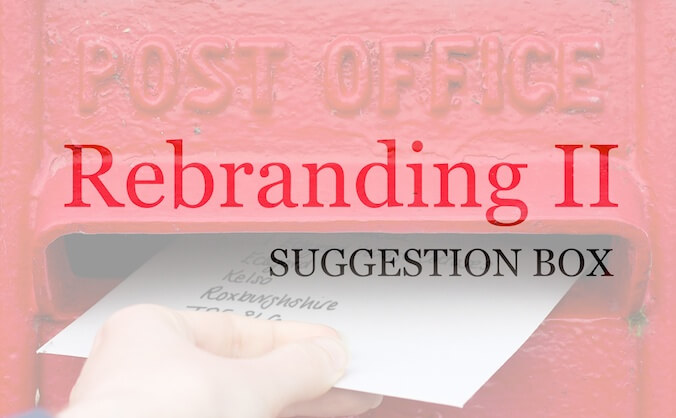
Approaching a rebrand
Friday 23 February 2018
Practical advice on how to go about changing the way you present your business

Friday 23 February 2018
Practical advice on how to go about changing the way you present your business
Last month I looked at what we mean by branding and the pros and cons of rebranding. This month I’m looking at some practical advice on how to go about changing the way you present your business.
If you have identified a solid business reason for rebranding, you should have a fairly clear idea of what aspects of your branding you need to change. But before you jump in, it’s important to do a bit of research and planning.
With a business up and running you have a number of major advantages over any start-up. For example, you know with much more certainty which products or services you want to focus on, and who your target market actually is (or who you want it to be!). Since you started your business, you may have developed a particular style of communication, or discovered how important a particular set of ethics are to you. All these things should give you a good idea of what your branding should look like.
If you don’t have a clear idea about where the mismatches are between your business vision and your current branding, then it might be worth asking your existing customers to give you a little feedback. For example, you could ask why they chose you over the rest of the competition, what it is that they liked about doing business with you, or what five words they would associate with your product or service. You might be surprised by what they say.
It’s likely that only some elements of your visual branding need to be changed – known as a brand ‘refresh’. For example, the colours, shapes and typefaces might remain the same, or very similar, but an outmoded logo might be redrawn to bring it up to date.
Keeping some elements constant can help you retain some of the valuable brand recognition that you have worked so hard to build up – as well as potentially saving you some money. Revising your branding in a way which allows you to continue using some of your materials (coloured tablecloths, for example), will improve the fit of the branding with your developing business, without starting again from square one.
Think about the timing of your rebrand and, if at all possible, aim to make the switch at a time of year where you forecast having low stocks of products or marketing materials. This will help to reduce waste and the unnecessary expense that goes with it. If you have quarterly collections, for example, you might work towards a rebrand launching with your Autumn collection, rather than half-way through the quarter.
Once you have a launch date set, work backwards, and create a schedule that leaves plenty of time for research, planning, design work, and manufacturing. It’s better to accumulate a pile of new branded items ready to go, than launch a new brand with a large pile of old branded items that will be thrown away.
Of course, rebrands don’t necessarily have to launch on one day. If the change you are making is incremental then you could consider gradually introducing the new branding over a more extended period.
If you are making a noticeable change to your visual branding, but want to retain part of your existing customer base, then it’s important to put together a communications plan which explains what will be happening, why, and when. You could use this as the basis for a creative marketing campaign around your rebrand. Think about effective ways to reach your existing market – through social media, email newsletters, your website, press and media, or at trade shows, and plan your messaging accordingly.
If you would like to chat about how I could help you plan your brand refresh, just get in touch.
Recent posts
Featured posts

Hello! I’m Sarah, an independent typographic designer, helping businesses to communicate their unique selling points through printed marketing and communications.
I’ve been sharing my knowledge about design, typography, marketing, branding and printing since 2014. I hope you enjoy reading my blog.

Sarah Cowan